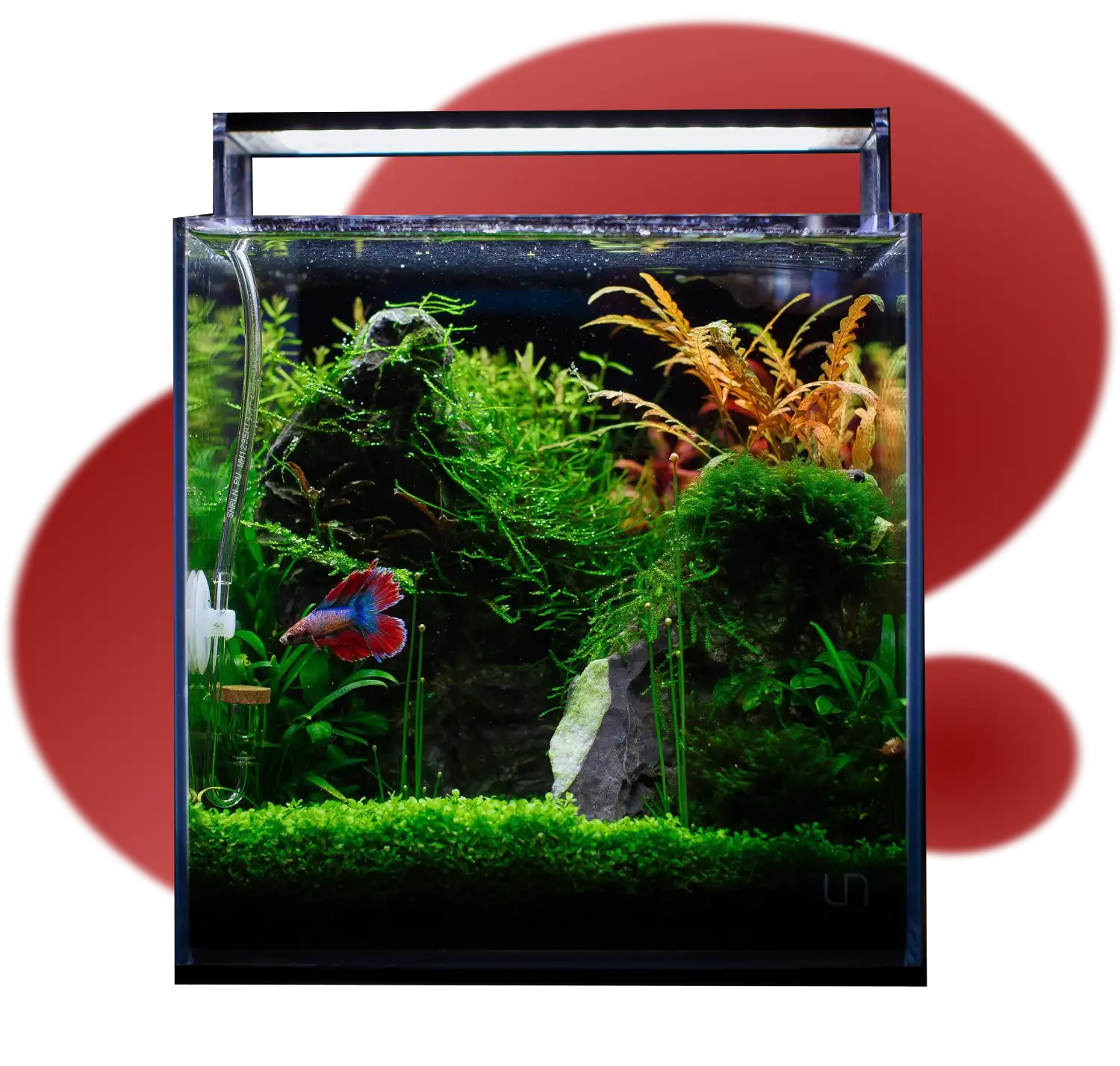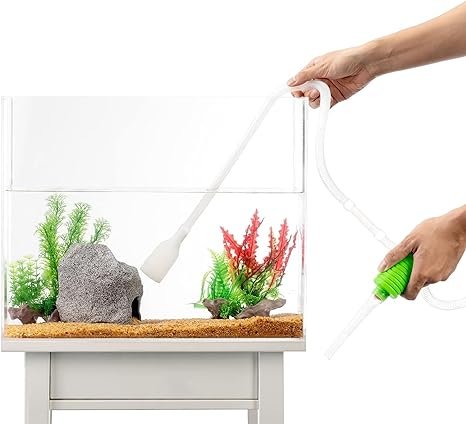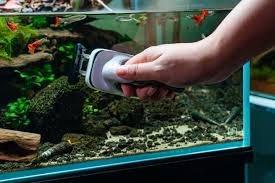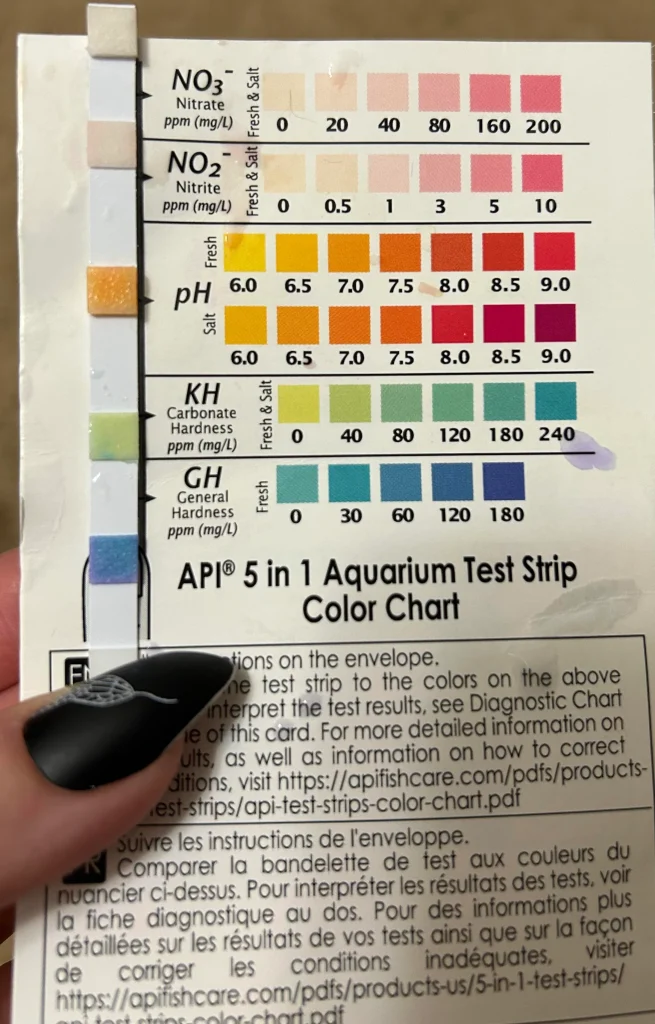
Chapter 3 - Setting up & Maintenance
How to start and care for your new betta
Congratulations on reaching the final chapter of this guide!
Without too many introductions, here’s what you’ll learn today:
- How to establish your initial tank setup
- How you can successfully conduct regular maintenance
- How to effectively test and adjust water parameters as needed.

Setting Up Your First Tank
A step-by-step breakdown, explained like you're 5
Setting up your first tank
Run Equipment
Fully assemble and run your equipment
Wait 5 Days
Let it run for 5 days
Water Change
Test the water and change 50% percent of the water
Repeat
Repeat the process 4 more times until water is stable
Step 1: Assemble & Turn On Your Tank
- Set up your tank by assembling it.
- Place the substrate and decorations in the tank.
- Install the filter and heater, then fill the tank with water.
- Add water conditioner according to the label.
- If you’re using real plants- go ahead and plant them.
- Then, turn on the heater and filter.
- Sprinkle a little bit of fish food into the tank. That will kick the ammonia and encourage the filter to start working faster.
Step 2: Let It Run
- Let the tank run as usual for 5 days.
- After 5 days, remove 50% of the water and replace it with conditioned tank water.
- Let it run for another 5 days.
Step 3: Test Water & Repeat
- Test your tank water using a testing strip. Your levels will probably be very much out ideal parameters- which is expected.
- Do another 50% water change as before
- Wait another 5 days, and test the water again.
Alright, so here’s the deal – patience is the name of the game in this process. You gotta go through at least three rounds before your water gets its act together. Even if your water passes all the tests before round three, hold off on adding any fish. The thing is, water parameters can go haywire real quick, leading to a water crash that’s bad news for your fish.
What you’re really up to here is getting those good bacteria settled in your tank. Without them, your water conditions might swing, and your fish could end up stressed out or worse, pushing up daisies.
I’d say go through this cycle about 3 to 5 times. Testing is your best buddy in this game. Once you’ve got two “positive” tests back-to-back, it’s time for one last water change. After that, you’re good to throw in your fish and let the underwater party begin.
Regular Maintenance
How to care for your betta so he never wants to live the tank.
Regular Maintenance Overview
Feed your betta commercial fish food twice a day. You can supplement that with another daily feeding of treats- usually in the form of live food like brine shrimp.
Once a week you’ll want to change about 25% of the water, vacuum the substrate, and scrape algae.
Once a month you’ll have to take your filter apart and rinse it in tank water to remove debris so it maintains it’s flow.
Feeding your betta
Since we’ve already talked about feeding, let’s just mention this quick recap:
Bettas need a high-protein diet to thrive.
Your best options are:
- Commercial fish food
- Live food (like brine shrimp)
Most fish keepers feed their betta commercial fish food twice a day. Then there’s room for a treat- which will be live food, with brine shrimp being the most popular.
Weekly Cleaning

Siphon Substrate
Essentially vacuum clean the bottom of the tank to remove what's cause water parameters to skew

Scrape Algae
As needed, to keep your tank looking clean and prevent overgrowth.

Change Water
Balance the water parameters by introducing new, conditioned, fresh water.
One thing you’ll have to do monthly is to clear your filter. Like the others, this a super simple process, but there’s one important thing to remember here:
You have to rinse the filter in tank water. Tap water will kill the beneficial bacteria.
All you’re really doing is removing the debris that is stuck in the filter intake that obstructs the flow. Simply take the filter apart and move it around in a bucket of tank water. Reassemble and re-install.
Testing Your Water
The easiest way to understand your tank is to test your water.
This might sound a bit abstract- but you’ll get a hunch when things may be out of whack. For the most part, your fish will be acting abnormally- which will be the biggest sign.
How to use a testing strip
Using a testing strip is a super easy 2-step process:
- Dip the strip
- Compare to the label
It really is that simple.
Now, let’s talk a little bit about what each one of those means and what should you do with your results.

Water Parameters- What do they mean?
There are 5 water parameters, and they all sort of play with each others. they are:
Ammonia
Ideal Range: 0
Nitrite
Ideal Range: 0
Temperature
Ideal Range: 78-82°F (26-28°C)
pH
Ideal Range: 6.5-7.5
Nitrate
Ideal Range: below 20 ppm
Some testing kits (like the one above) will also include measurements for General Hardness (GH) and Carbonate Hardness (KH), but those are directly related to pH. Since bettas aren’t as sensitive to those parameters as other species, I’ll save you confusion.
Water out of target? Here's how to fix it
Sometimes, and especially in the beginning, your water parameters will be out of the ideal range.
Let me give you a general overview of how frequently you’ll encounter each scenario:
| Parameter | Frequency | What To Do |
|---|---|---|
| Temperature | Rare | Check your thermometer |
| pH | Fairly Rare | Further troubleshooting needed |
| Ammonia | Common | Change the water |
| Nitrite | Common | Change the water |
| Nitrate | Common | Change the water |
Recap
We’ve covered quite a bit here, so let’s recap:
Feed your betta twice to three times a day
Clean their tank and change the water once a week.
Clean your filter with tank water once a month.
Test your water every couple of days, or when you see your fish behaving abnormally.
